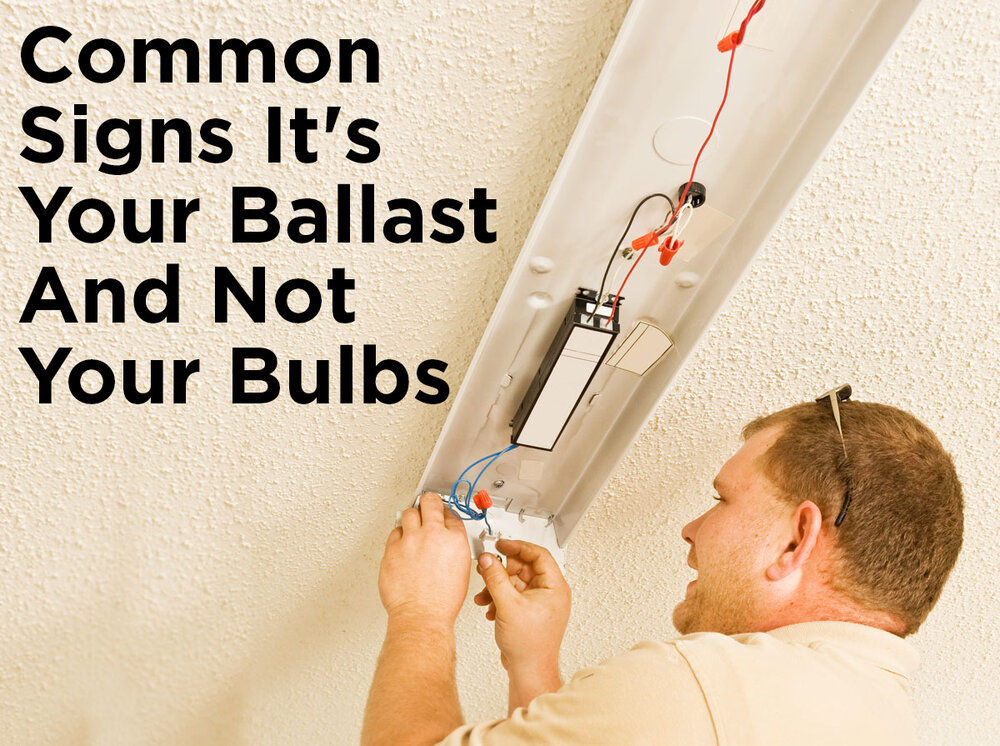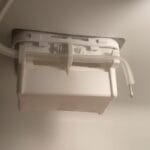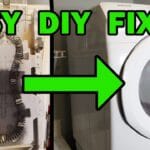Troubleshooting fluorescent lights involves checking the bulb, starter, and ballast. Common issues include flickering, dimness, and dead tubes.
Fluorescent lighting, a staple in homes and offices, offers energy efficiency and long-lasting illumination. Yet, it’s not uncommon for issues to arise, necessitating some basic troubleshooting skills. Understanding the components of your fluorescent light can save time and money. This guide focuses on identifying and fixing common problems without needing professional help.
By keeping the troubleshooting steps simple and straightforward, even those with minimal electrical knowledge can ensure their fluorescent lights work efficiently. This not only enhances room ambiance but also contributes to a greener environment by reducing energy consumption. Whether it’s a flickering tube or a light that won’t turn on, mastering the basics of fluorescent light troubleshooting is an invaluable skill for maintaining optimal lighting conditions in your space.
Introduction To Fluorescent Lighting
Fluorescent lights illuminate countless spaces worldwide. They provide bright, efficient lighting for homes, offices, and schools. Understanding fluorescent lights helps us maintain and troubleshoot them effectively.
The Basics Of Fluorescent Lights
Fluorescent lights work by exciting gases, producing light. This process involves several components:
- Tube: Houses the gas and phosphor coating.
- Electrodes: Start the gas excitation process.
- Ballast: Regulates current to the lamp.
- Starter: Helps ignite the light.
Why Fluorescent Lights Are Widely Used
Fluorescent lights are popular for good reasons:
| Reason | Benefit |
|---|---|
| Energy Efficiency | Less energy for more light |
| Longevity | Lasts longer than incandescents |
| Cost-Effective | Saves money over time |
| Variety | Comes in many shapes and sizes |

Credit: blog.1000bulbs.com
Common Issues With Fluorescent Lights
Fluorescent lights are popular for their efficiency. Yet, they can have issues. Let’s explore common problems and solutions.
Flickering And Flashing
Flickering in fluorescent lights is a frequent annoyance. This may signal a simple fix or a deeper problem. Here’s what to check:
- Bulbs: Ensure they’re secure in their sockets.
- Starter: If your fixture has one, it might need replacing.
- Ballast: A failing ballast can cause flickering. Consider a replacement.
- Temperature: Extreme cold can affect performance. Insulate the area if possible.
Dimming Or Low Light Output
Dim lights can be just as frustrating as flickering ones. Check these potential causes:
| Issue | Solution |
|---|---|
| Age of Bulbs | Replace with new ones. |
| Dirty Fixtures | Clean for better light output. |
| Bad Ballast | Ballast might need a replacement. |
| Power Supply | Ensure consistent power flow. |
Troubleshooting Starter Problems
Fluorescent lights are common in homes and offices. Sometimes, they flicker or won’t turn on. Often, a faulty starter is to blame. This section will guide you through fixing starter issues.
Identifying Starter Issues
Starters are small cylinders in fluorescent light fixtures. They help the light turn on. A bad starter causes flickering or no light. Look for these signs:
- Flickering when the light starts
- Delayed start of the fluorescent light
- Dim light that doesn’t get brighter
Check the starter if you notice these issues. It’s usually near the bulb.
How To Replace A Faulty Starter
Replacing a starter is easy. You need a new starter and a few minutes. Follow these steps:
- Turn off the light switch.
- Remove the fluorescent tube carefully.
- Twist the starter counterclockwise.
- Take it out from its socket.
- Insert the new starter.
- Twist it clockwise to lock it in place.
- Put the tube back.
- Turn on the switch to test.
Always use the right starter type for your fixture. Check the old starter for specifications. If the light still has issues, consult a professional.
Dealing With Faulty Ballasts
Fluorescent lights brighten our homes and offices. But sometimes, they flicker, buzz, or stop working. Often, a faulty ballast is the culprit. Let’s dive into how to identify and fix a bad ballast.
Symptoms Of A Bad Ballast
A bad ballast can cause several issues. Here are the common signs:
- Flickering or flashing lights
- Lights not turning on
- Buzzing or humming sounds
- Overheating light fixtures
- Lights too dim or too bright
Steps To Replace A Ballast
Follow these steps to replace a faulty ballast:
- Turn off the power at the breaker.
- Remove the light cover and tubes.
- Unscrew and take out the old ballast.
- Match and connect the new ballast wires.
- Screw in the new ballast.
- Replace the tubes and cover.
- Turn on the power.
Always pick the right ballast for your light.
| Type of Light | Recommended Ballast |
|---|---|
| Fluorescent | Electronic |
| LED | LED Driver |
Changing a ballast is easy with the right tools and steps.
Tube Replacement And Maintenance
Tube Replacement and Maintenance are key to keeping your fluorescent lights working well. Over time, tubes may dim, flicker, or stop working. Knowing when to replace them and how to dispose of old ones is important. This guide helps you maintain your lighting effectively.
When To Replace Fluorescent Tubes
- Flickering: Constant flickering means it’s time for a new tube.
- Dimming: If the light is not as bright, replace the tube.
- Color Shift: Changes in color signal tube aging.
- No Light: No light means the tube has failed.
How To Properly Dispose Of Old Tubes
Fluorescent tubes contain harmful materials. Proper disposal is crucial. Follow these steps:
- Turn Off Power: Safety first. Always turn off the power.
- Remove Carefully: Gently twist the tube from its sockets.
- Store Safely: Keep the tube in its original packaging or wrap it in newspaper.
- Recycle: Take old tubes to a recycling center that accepts them.
Remember, throwing tubes in the trash is not safe for the environment.

Credit: getquickspark.com.au
Electrical Connections And Wiring
Troubleshooting fluorescent lights often leads to the electrical heart of the issue: connections and wiring. These components are crucial for a stable light source. Faulty wiring can lead to flickering or no light at all. Proper care ensures longevity and safety.
Checking For Loose Connections
Loose connections are a common culprit behind lighting problems. Follow these steps:
- Turn off the power at the circuit breaker.
- Remove the light cover to access the connections.
- Check wire nuts and terminal screws for snugness.
- Ensure wires are firmly in their designated ports.
If connections are tight, the problem may lie elsewhere. If loose, secure them and test the light.
Safety Precautions When Handling Wires
Safety is paramount when dealing with electricity. Remember these tips:
- Always turn off power before starting.
- Use a voltage tester to confirm power is off.
- Wear rubber gloves to prevent shocks.
- Keep tools with insulated handles nearby.
With safety steps in place, you can focus on fixing the light safely.
Environmental Factors Affecting Performance
Fluorescent lights don’t work alone. Environmental factors play a big role in how well they perform. Understanding these factors can help you troubleshoot and maintain your lighting.
Temperature And Humidity Effects
Temperature and humidity can affect fluorescent lights. Let’s explore how:
- Cold Weather: Makes lights dimmer and start slower.
- High Heat: Can shorten bulb life.
- Humidity: Too much causes electrical issues.
For best performance, keep your space at moderate temperature and humidity.
Impact Of Surrounding Light Sources
Nearby lights can impact your fluorescent lights. Here’s what to know:
| Natural Light | Artificial Light |
|---|---|
| Can cause glare and overheating. | May lead to conflicting light temperatures. |
Avoid placing fluorescent lights near intense light sources.

Credit: diy.stackexchange.com
Advanced Troubleshooting Techniques
Fluorescent lights can be tricky to fix. Sometimes, basic steps don’t solve the problem. In such cases, advanced techniques can help. These methods need special tools and some knowledge about electrical systems.
Using A Multimeter To Diagnose Issues
Testing with a multimeter is a sure way to find issues. Here’s what to do:
- Turn off the power to the light.
- Remove the tube and inspect for dark spots.
- Set the multimeter to continuity mode.
- Test the pins at each end of the tube.
- Check the ballast for continuity.
- Replace any part that fails the test.
If the multimeter shows no continuity, there’s a break in the circuit. The ballast, starter, or the tube itself could be faulty.
Fluorescent Light Repair vs. Replacement
Fluorescent Light Repair Vs. Replacement
Deciding between repair or replacement involves several factors:
| Consideration | Repair | Replacement |
|---|---|---|
| Cost | Often lower | Higher initially |
| Efficiency | May not improve | Improves with new technology |
| Longevity | Depends on the age | Longer with LED alternatives |
Consider the age and condition of the fixture. Newer LED models save energy and last longer. Older fixtures might need more frequent repairs. Calculate both the immediate and long-term costs to decide.
Preventive Measures And Best Practices
Keeping fluorescent lights in top shape requires regular attention. Below, find essential tips and upgrades. These will ensure your lights work well and save energy. Let’s dive into the details:
Routine Maintenance Tips
- Check for flickering: This can signal a dying bulb or faulty connection.
- Inspect starters: Replace if lights take time to turn on.
- Clean fixtures: Dust and dirt reduce light output.
- Tighten loose connections: This ensures optimal performance.
- Test ballasts: A failing ballast may need replacement.
Upgrading To More Efficient Lighting
| Current Lighting | Efficient Upgrade | Benefits |
|---|---|---|
| T12 bulbs | T8 or T5 bulbs | Better efficiency, less heat |
| Magnetic ballasts | Electronic ballasts | Energy savings, no noise |
| Fluorescent tubes | LED retrofits | Long life, significant savings |
Upgrade to LED for the best savings. LEDs last longer and use less power. They also turn on instantly. They are good for your wallet and the planet.
Frequently Asked Questions
Why Do Fluorescent Lights Flicker?
Fluorescent lights often flicker due to temperature, bulb age, or a faulty starter. Ensuring proper installation can minimize flickering.
What Causes Fluorescent Bulb Buzzing?
Buzzing in fluorescent bulbs is typically caused by an aging ballast. Replacing the ballast can eliminate this issue.
How To Fix A Fluorescent Light That Won’t Turn On?
First, check the bulb, starter, and ballast. Replace any malfunctioning components to restore functionality to the light.
Can Dim Fluorescent Lights Be Brightened?
Yes, dim fluorescent lights can be brightened by cleaning the fixture, replacing the bulb, or upgrading the ballast.
When Should I Replace My Fluorescent Light?
Replace fluorescent lights when they become dim, flicker, or after about 10,000 to 20,000 hours of use to maintain optimal performance.
Is A Flickering Fluorescent Light Dangerous?
A flickering fluorescent light is not typically dangerous but may indicate a faulty ballast or bulb that should be replaced to prevent further issues.
Conclusion
Navigating fluorescent light issues doesn’t have to be daunting. Our troubleshooting guide equips you with practical solutions for common problems. Remember, safety is paramount when addressing electrical fixtures. For persistent issues, consult a professional. Keep your spaces brightly lit and hassle-free by mastering these tips.




